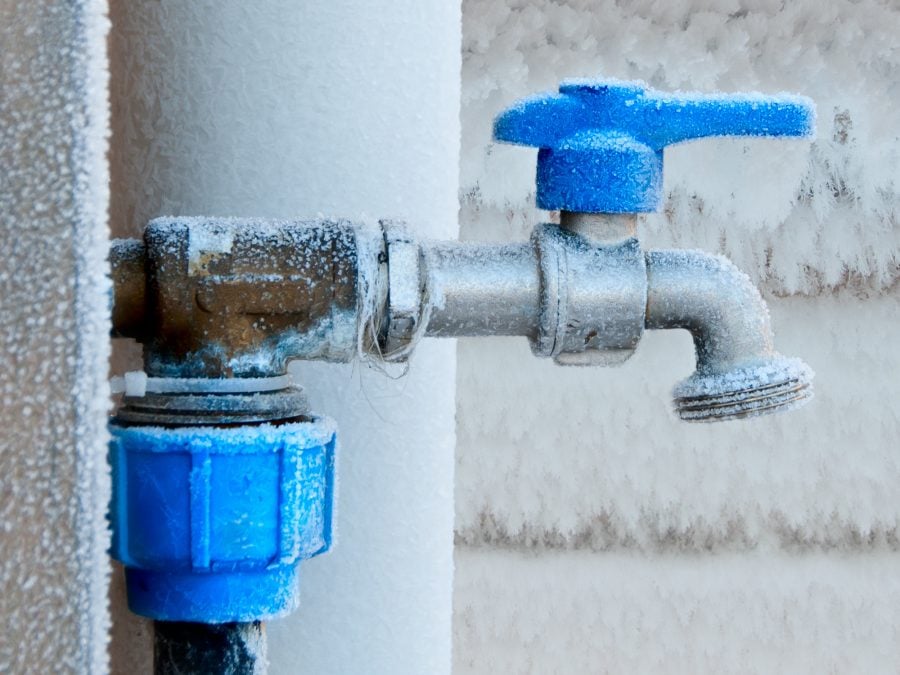Are you on the lookout for selective information involving How to Prevent Your Pipes From Freezing?

Winter can ruin your pipes, especially by freezing pipelines. Below's how to avoid it from taking place and what to do if it does.
Intro
As temperature levels decline, the risk of frozen pipes boosts, potentially bring about pricey repairs and water damages. Recognizing just how to avoid frozen pipelines is vital for house owners in cold climates.
Understanding Frozen Pipes
What causes pipes to ice up?
Pipes freeze when revealed to temperature levels below 32 ° F (0 ° C) for expanded periods. As water inside the pipes freezes, it expands, taxing the pipe wall surfaces and possibly causing them to rupture.
Risks and damages
Icy pipes can result in water interruptions, home damage, and pricey repair work. Burst pipelines can flooding homes and trigger considerable structural damages.
Indicators of Frozen Pipes
Recognizing icy pipes early can avoid them from rupturing.
Exactly how to determine icy pipes
Look for reduced water flow from taps, uncommon odors or noises from pipelines, and visible frost on exposed pipes.
Avoidance Tips
Insulating vulnerable pipelines
Cover pipes in insulation sleeves or make use of heat tape to secure them from freezing temperature levels. Concentrate on pipelines in unheated or exterior areas of the home.
Heating techniques
Maintain interior spaces properly heated up, specifically locations with plumbing. Open closet doors to enable warm air to distribute around pipes under sinks.
Shielding Exterior Plumbing
Garden pipes and outside faucets
Disconnect and drain pipes yard hoses before winter months. Install frost-proof spigots or cover exterior taps with protected caps.
What to Do If Your Pipes Freeze
Immediate actions to take
If you believe icy pipes, maintain faucets open up to ease pressure as the ice thaws. Make use of a hairdryer or towels taken in hot water to thaw pipes gradually.
Long-Term Solutions
Architectural changes
Take into consideration rerouting pipes far from outside walls or unheated locations. Add extra insulation to attic rooms, basements, and crawl spaces.
Upgrading insulation
Invest in top notch insulation for pipelines, attics, and wall surfaces. Proper insulation helps keep constant temperatures and decreases the risk of icy pipes.
Verdict
Avoiding frozen pipelines calls for aggressive measures and quick feedbacks. By understanding the reasons, indicators, and preventive measures, home owners can secure their plumbing throughout cold weather.
6 Proven Ways to Prevent Frozen Pipes and Protect Your Home
Disconnect and Drain Garden Hoses
Before winter arrives, start by disconnecting your garden hoses and draining any remaining water. Close the shut-off valves that supply outdoor hose bibs and leave the outdoor faucet open to allow any residual water to drain. For extra protection, consider using faucet covers throughout the colder months. It’s also important to drain water from any sprinkler supply lines following the manufacturer’s directions.
Insulate Exposed Pipes
Insulating your pipes is an effective way to prevent freezing. Pipe insulation is readily available at home improvement stores and is relatively inexpensive. Pay close attention to pipes in unheated areas such as the attic, basement, crawl spaces, or garage. Apply foam insulation generously to create a buffer against the cold. You can also wrap your pipes in heat tape or thermostat-controlled heat cables for added warmth.
Seal Air Leaks
Inspect your home for any cracks or openings that could let in cold air. Seal any holes around the piping in interior or exterior walls, as well as the sill plates where your home rests on its foundation. Additionally, make sure to keep your garage door closed unless you’re entering or exiting. Leaving it open creates a significant air leak that can lead to frozen pipes.
Allow Warm Air Circulation
During cold snaps, it’s essential to allow warm air to circulate evenly throughout your home. Leave interior doors ajar to promote better airflow. Open kitchen and bathroom cabinets to help distribute heat consistently around the rooms. If you have small children or pets, be sure to remove any household chemicals or potentially harmful cleaners from open cabinets for safety.
Let Faucets Drip
A small trickle of water can make a big difference in preventing ice formation inside your pipes. When temperatures drop significantly, start a drip of water from all faucets served by exposed pipes. This continuous flow helps prevent the water from freezing. Additionally, running a few faucets slightly can relieve pressure inside the pipes, reducing the chances of a rupture if the water inside does freeze.
https://choateshvac.com/6-proven-ways-to-prevent-frozen-pipes-and-protect-your-home/

Do you like more info about Helpful Tips to Prevent Frozen Pipes this Winter? Make a remark directly below. We will be glad to listen to your opinions about this page. In hopes to see you back again in the near future. Sharing is nice. Helping people is fun. We enjoy your readership.
Visit Website